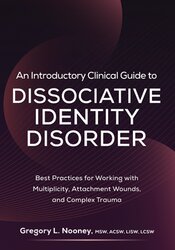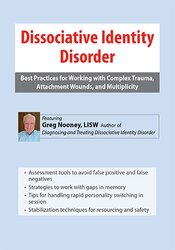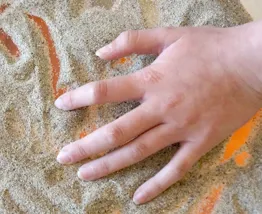Understanding the Fundamentals of Identity

Identity is a hot topic in today’s cultural and clinical conversations and for good reason. As therapists working with clients who live with Dissociative Identity Disorder (DID), it’s critical that we deepen our understanding of what identity really is, where it comes from, and how it develops, particularly through a trauma-informed lens.
Here are some of the foundational concepts of identity that inform my clinical approach:
What Do We Mean by Personal Identity?
We’re not born with a fully formed sense of self. In fact, if you’ve ever listened to Elmo from Sesame Street refer to himself in the third person, you’ve seen this in action. Elmo is developmentally on point for a 2-year-old. He mirrors the language others use to refer to him. That’s how identity begins to take shape.
With consistent, attuned caregiving, children gradually develop a cohesive sense of identity. This internal framework becomes the foundation for how we relate to ourselves and the world around us. But when early caregiving is marked by trauma, neglect, or abuse, this developmental process can be disrupted. Dissociation may emerge as a powerful survival strategy.
In extreme cases, dissociation can become so pervasive that the child develops multiple distinct identities, each helping to compartmentalize the trauma. These dissociative barriers serve a protective function. If these identities persist into adulthood, the individual may meet the criteria for DID.
Neurodivergence and the Need for a Paradigm Shift
In recent years, we’ve made significant strides in how we understand neurodiversity, especially in the context of autism. We no longer view individuals on the spectrum as broken or disordered, but as neurodivergent individuals with uniquely structured brains.
I believe it’s time we apply this same neurodiversity lens to DID. Rather than pathologizing multiplicity, let’s begin to understand it as a functional, adaptive response to profound stress and trauma. Dissociation, after all, allowed the individual to survive. That’s not dysfunction—that’s resourcefulness.
The Myth of the Singular Identity
One of the greatest barriers to truly affirming care for individuals with DID is our cultural obsession with singularity and the belief that a unified self is the only “normal” or “healthy” way to be. But there’s no clinical evidence to support the idea that people with multiple identities can’t live meaningful, successful lives.
So, what should therapy look like? The goal is not to collapse multiplicity into a single identity. That’s not only unrealistic, but can also be harmful. Instead, our work as therapists is to help clients build internal communication, foster cooperation, and support co-consciousness.
In short, we help the system organize itself in a way that works for them on their terms. When we do that, we honor one of the most fundamental principles of our profession: client self-determination.
Embracing Multiplicity in the Therapy Room
Shifting how we think about identity (and multiplicity in particular) requires challenging dominant cultural narratives and the limitations of the medical model. But doing so opens the door to more affirming, effective care.
When we stop trying to force a singular identity and instead support clients in building relationships within their system, we help them move toward lives of meaning, autonomy, and connection.
Multiplicity is not the problem. It’s often the solution—the elegant, adaptive system that helped someone survive the unimaginable.
If you’d like to dive deeper into these ideas and gain practical strategies for working with multiplicity, I invite you to check out 5 Common Myths About Dissociative Identity Disorder (DID) as well as my book, An Introductory Clinical Guide to Dissociative Identity Disorder.

Based on Greg Nooney’s 30-plus years of working with DID, this introductory how-to guide provides you with foundational, yet easy-to-follow, best practices for identifying and working with multiplicity.

Greg Nooney is the author of Diagnosing and Treating Dissociative Identity Disorder (NASW Press, 2022). A therapist for more than 35 years, he’s worked with hundreds of clients with severe trauma, dissociative symptoms, and dissociative identity disorder. Watch him for this training and discover a step-by-step guide on how you can diagnose, stabilize and treat trauma in these complex clients.





